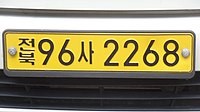News
We will be a company that connects the world as one.

News Letter
Open AI SDK that offers diverse application possibilities
2024.06.03 11:20

“Most AI-based detection functions used on PCs will be supported.”
“The performance on IP camera based on the Eyenix chipset is impressive.”
“I couldn’t believe it before I tried it, but it really works!!”
This newsletter is an introduction to specific development cases using our open SDK. This is to enable customers to port AI learning models directly to our cameras and to promote confirmation of feasibility. We introduced similar content a few months ago, but in order to resolve the doubts many people have, we are sharing the content below with the consent of our customers.
Our customer company labeled about 20 types of car license plates, prepared a license plate detection model that divides license plates into four groups, a separate AI learning model that extracts numbers and Korean characters, and finally performed post-processing to perform license plate recognition. Our customer company implemented LPR by porting a total of 5 AI learning models onto the Eyenix SOC-based cameras.
Classification of License Plates
License Plate |
Year of release |
Usage |
Remarks |
 |
Year 1996 |
Personal Vehicle |
License plates with regional names such as Seoul, Gyeonggi, etc. Currently only some remains |
|
Year 2004 |
Personal Vehicle |
National license plate without region name Currently only some remains |
|
Year 2006 |
Personal Vehicle |
One-line, long license plate without region name This is the majority of license plates currently in use. |
|
Year 2006 |
Commercial Vehicle |
One-line, long license plate without region name Most license plate used on Taxis and Trucks |
|
Year 2006 |
Commercial Vehicle |
License plates with regional names such as Seoul, Gyeonggi, etc. Most license plate used on Taxis and Trucks |
|
Year 2006 |
Large Buses |
License plates with regional names such as Seoul, Gyeonggi, etc. Most license plate used on large buses |
|
Year 2019 |
Personal Vehicle |
License plate with the first three digits |
|
Year 2019 |
Personal Vehicle |
License plate with the Taegeuk symble and first three digits Reflective license plate |
|
Year 2019 |
Personal Vehicle |
Environmental license plates for electric vehicles, etc. The blue background |
|
Year 2023 |
Corporate Vehicle |
Corporate vehicle license plate released in 2023 The background color is light green |
Currently, diplomatic vehicle license plates, temporary vehicle license plates, commercial special vehicle license plates, military vehicle license plates, and some private business vehicle license plates released in 1973 and 1996 are excluded. In order to remove unnecessary information from the metadata resulting from the inference results and ultimately confirm it as a license plate, LPR was implemented according to the flow below. Currently, LPR within 10 frames per second is supported.
Inference algorithms
For post-processing work, it was developed in native C under a separate agreement with Seyeon Tech.
The contents below are a summary of the points emphasized by the customer during development using SDK 4.0.
- Possible to port multiple AI learning models
- Support for post-processing and transmission of metadata in SDK
- SDK supports API for video and AI information (metadata) processing
- Supports display of bounding box and metadata information in browser
- Porting is possible on its own without the help of Seyeon Tech, and license management of ported AI models is possible.
Seyeon Tech supports open SDK so that customers can secure their own AI IP cameras by porting their own AI learning models directly to IP cameras. In general, it was practically impossible to install individually owned AI technology into IP cameras unless you were an IP camera manufacturer. Seyeon Tech supports a learning environment on a PC and a standardized conversion tool on the web for porting AI models to IP cameras, and supports an environment where customers can port their own AI learning models to IP cameras and check the results. do. (Prior agreement required)
Customers can port their own databases and learning models on their own without having to share them with Seyeon Tech. If AI technology needs to be installed at the edge, it can be implemented at the camera level using our AI SDK.
The customer company that commercialized LPR this time is a company that has been engaged in LPR-related business for a long time in PC or embedded environments. It has already implemented LPR in PC, Raspberry Pi, Jetson, etc., and has various types of car license plates. This is a case of commercialization after several rounds of repeated testing and performance verification.
In addition, the customer company is currently learning a flame detection and smoke detection model, porting it to the camera, and performing post-processing work based on randomness.
Some customer companies are carrying out instrument panel recognition and recognition of specific numbers at construction sites in parallel.
Seyeon Tech's IP camera, which operates based on Inix SOC, can be thought of as an AI camera that can apply general AI-based detection functions directly at the edge.
Seyeon Tech aims to provide an open AI camera development platform to development-based customers who want to utilize AI technology. We aim to increase the usability of cameras by sharing core technologies from our partners.
If you need support for technology development as mentioned above, we can introduce you to related companies.
Others

Seyeon Tech is a specialized IP camera development, production, and sales company with the longest experience in Korea, and has middleware optimized for various SoCs and operating systems. In particular, we have recently released an open AI SDK and are strengthening cooperation with various AI software companies. Detailed information about the product can also be found on the website (http://flexwatch.com)














 이전글
이전글
 다음글
다음글


